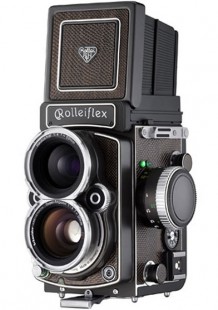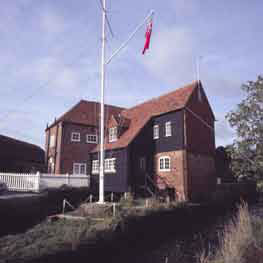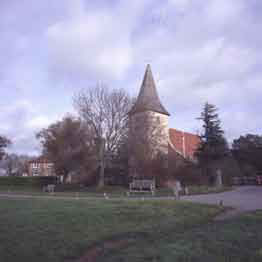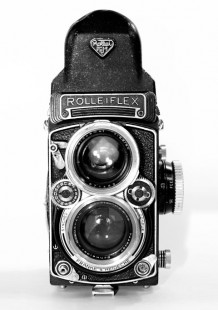The example of the Rolleiflex 4.0FW I brought with me to the November 2006 Club Rollei meeting attracted a fair amount of interest from members present, and I felt it might be useful to provide some information for a wider audience. This camera seems to have attracted very little coverage in the general photographic press apart from quite a good review in the British Journal of Photography some time ago. In some ways this is surprising, because the introduction of a new TLR model is not exactly commonplace in the 21st century.
It is essentially the same body as the Rolleiflex 2.8GX but fitted with a 50mm f4 Schneider Super Angulon lens (and a matched Heidosmat viewing lens). As such, the exposure metering is the same with the red/yellow/green LEDs in the focusing hood and the sensor in the viewing lens. Flash synchronisation is ‘X’ type only for electronic flash via the traditional socket on the lens panel or using the ‘hot shoe’ adjacent to the focusing knob. In the latter case, through the lens flash sync. can be obtained by using a suitable flashgun such as a Metz 45CL4 and a SCA 356 adaptor.
Finish of the camera largely follows Rollei TLR tradition, but the leathers are a dark brown type rather than the more usual black or grey. How does this model compare with the previous 1961 Wide Angle Rolleiflex? Well, I have been using mine on a regular, but not intensive, basis for 18 months or so now and have found it generally very satisfactory. The metering is a very considerable improvement on the rather fiddly, uncoupled meter of the earlier model. Apart from this, the operational use of the 4.0FW is almost identical to its predecessor. There appears to be little practical difference in performance between the current Schneider lens and the Zeiss Distagon previously used, but although the Schneider is claimed to have a focal length of 50mm as compared with 55mm for the Zeiss there is no discernible difference in the field of view and I suspect both are in the 52-53mm range. Presumably one manufacturer chose to ‘round down’ and the other to ‘round up’.
Film loading is the same as for the Rolleiflex 2.8GX or the Rollei T with winding to a red dot to position correctly for the first exposure rather then the film feeler system. The focusing hood is simply the standard 2.8GX type but with the rear ‘eye hole’ not punched through so that there is no sports finder facility. This arrangement avoids the considerable cost of the special optical sports finder used on the earlier Wide Angle model. I have found it no drawback as a pentaprism (new type or old type) can be fitted for eye level use on the odd occasions this is required.
Like the 2.8GX, the 4.0FW does not offer the option of using a Rolleikin or the optical flat glass. The lenses have the identical Bayonet IV fittings to the earlier wide angle model, so all accessories are interchangeable. Rollei have reintroduced a slightly shallower version of the lens hood (which allows the ERC to be closed with it in situ). Neither Rollei nor any other German maker, so far as I am aware, is now manufacturing the Bayonet IV filters, but this is no problem as SRB Film Services of Luton can produce them to order in just about any colour or strength.
There is a smart black leather ERC for the 4.0FW which will fit the earlier camera equally well because both have the same centrally positioned scissor strap mountings on each side. It could also be used for the similar Rolleiflex 2.8E2 but will not fit the Rolleiflex 2.8F well due to the 2.8F’s filter dial. So far, the only problem with the 4.0FW has been the fact that the brown leathers are prone to damage and thus the new appearance does not last long (whereas the more usual black leathers generally stay good for years). Perhaps I would more truthfully say this is the only ongoing problem - when received from Robert White, the film transport was wrongly set up so that the first exposure did not occur until the film was halfway through the camera. Whilst RW’s were very helpful, it took the UK repairer, Johnsons Photopia, the best part of three months to decide they could not carry out the warranty repair and send the camera to the factory who promptly fixed the fault!



